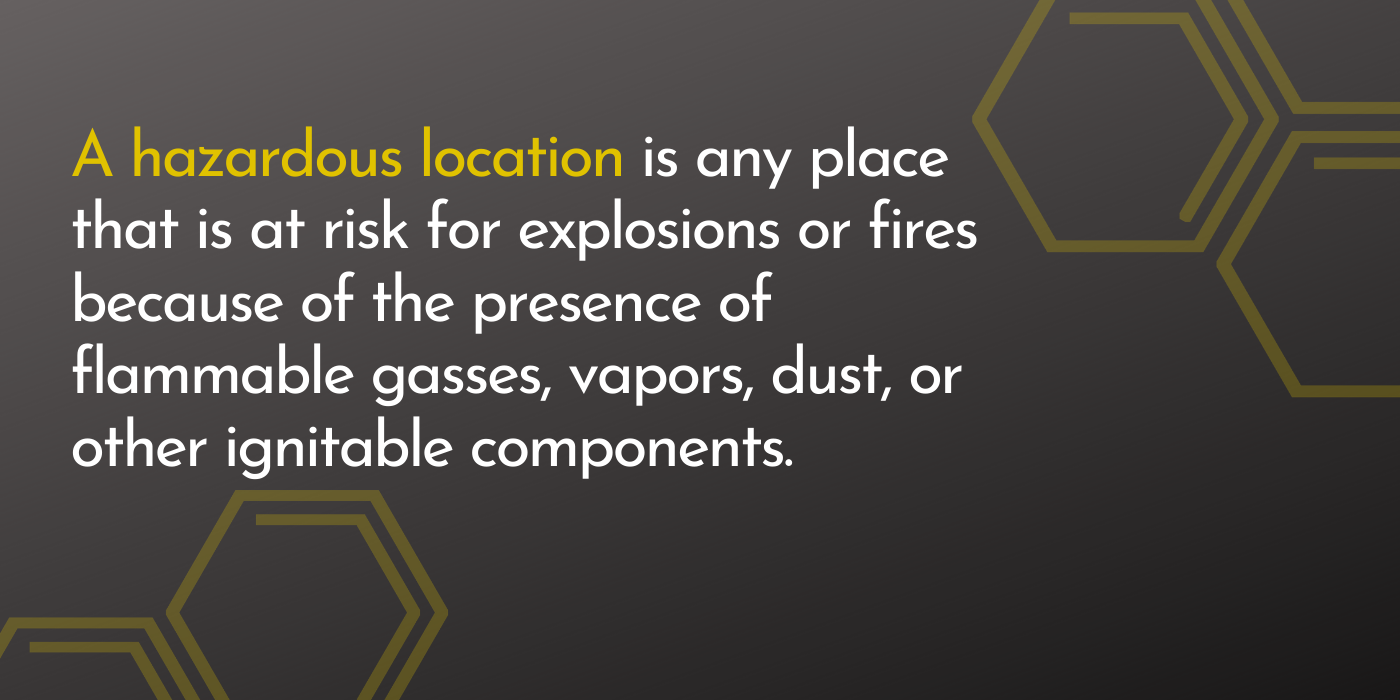Which Sealing Fittings Do You Need?
When does the NEC require sealing fittings, and where do you need to put them? If you operate in a hazardous location, you need to follow the NEC Chapter 5 to a T to keep your workers and facility safe. The NEC has clear standards for which type of sealing fittings to use in various hazardous locations, but we often see areas where people have installed them incorrectly.
In this article, we’ll provide an overview of different hazardous location designations, as well as which type of sealing fittings you need to be using in various boundary locations.
Hazardous Location Designations
In electrical engineering, a hazardous location is any place that is at risk for explosions or fires because of the presence of flammable gasses, vapors, dust, or other ignitable components. Hazardous, also called classified, locations can be further broken down into the following classes and zones:
Class 1 Division 1 = places where flammable gasses, liquids, or vapors exist all of the time or some of the time during normal operations.
Zone 0 = places where flammable gasses, liquids, or vapors are always present or present for long periods of time during normal operations.
Zone 1 = places where flammable gasses, liquids, or vapors are likely to be present during normal operation, from 0.1% to 10% of the time.
Class 1 Division 2, also called Zone 2 = places where flammable gasses, liquids, or vapors are not likely to be present during normal operations. Flammable substances would only be present here during an abnormal condition, such as a leak.
Sealing Fittings for Hazardous Locations
The purpose of a sealing fitting is to prevent explosions or fires in one conduit or area from spreading throughout the conduit system or the facility. Oil and gas companies, for example, need high-quality seals to prevent rapid chain reactions in the event of an explosion or fire. Seals also contain gasses and vapors to hazardous areas so that they do not spread to non-hazardous locations where they could do damage.
Too often, we’ve seen installations where the sealing fitting was completed incorrectly. Common mistakes include installations in the wrong locations, improperly sizing the seals, insufficient thickness of the sealing compound, and not properly draining a sealing fitting.
The potential danger to workers is too high to accept insufficient or shoddy seals. The following locations always need a sealing fitting:
A conduit exiting a Class 1 Div 1 environment
A conduit exiting Class 1 Div 2 to a non-hazardous location
18 inches from an explosion-proof enclosure
Why Wetherbee?
Our partners rely upon our expertise to install sealing fittings correctly, thereby creating safe environments for their workers. When you work with Wetherbee, you get access to 24-hour a day emergency service and installations that work with your schedule. Get in touch with Oklahoma’s most trusted electrical contractor to discuss your project today.



